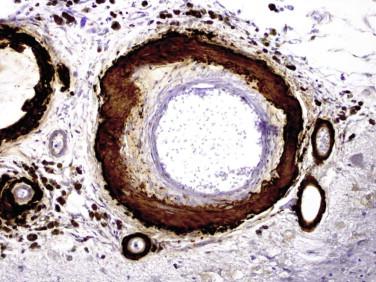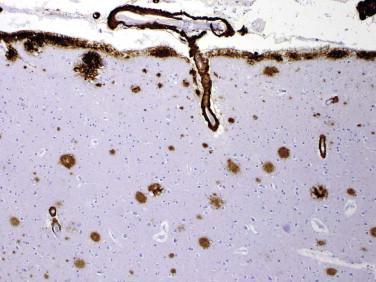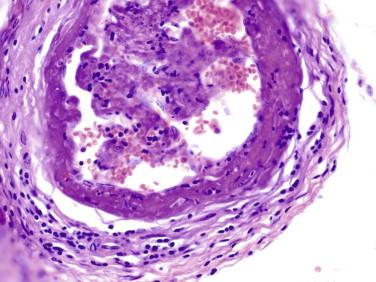Physical Address
304 North Cardinal St.
Dorchester Center, MA 02124
Vasculopathy arising from deposition of Aβ-amyloid peptide within walls of meningeal and superficial cortical blood vessels, which can lead to acute focal, multifocal, or lobar hemorrhages; a small subset of patients develop an intense inflammatory response called Aβ-related angiitis (ABRA)
Not a distinct disease, except in rare genetic forms
Found in 98% of confirmed cases of Alzheimer's disease
Usual age range: 70 to 80 years; rarely symptoms may be present in fifth to sixth decades
Leads to increased risk for microscopic and large lobar hemorrhages
Hemorrhage typically involves superficial regions of cerebral cortex
Symptoms depend on anatomic location of hemorrhage
Any lobe of the brain can be affected, occipital most common
Lobar hemorrhages tend to be peripheral and usually involve the cerebral cortex
Contralateral neglect syndrome when right parietal lobe affected
Hemorrhages can present as a massive stroke or recurrent hemorrhagic infarctions
Cognitive impairment worsens as the disease progresses
Acute lobar hemorrhage may cause death resulting from herniation and mass effect
Removal of blood is often indicated, but bleeding from amyloid-laden blood vessels can complicate surgery
Immunosuppressants are indicated in ABRA and can lead to dramatic responses
CT is the most effective imaging tool for detection of acute hemorrhage
Gradient-echo (GE) MRI can detect millimeter-sized foci of blood products in brain and thus can be used to determine hemorrhagic burden over time
β-amyloid deposits can be visualized on imaging by specific probes and positron emission tomography
If hemorrhage is present, it will be located in a superficial or peripheral location—cerebral cortex and leptomeninges
Can often have multiple hemorrhages or hemorrhagic necrosis (infarcts) of different ages; hemosiderin deposition seen with remote hemorrhage
Hyalinized-appearing blood vessels with mural thickening and effacement by eosinophilic, homogeneous, acellular material
Amyloid accumulates in the basement membrane around smooth muscle cells, eventually leading to destruction of the muscularis
Generally, the endothelium is spared until late-stage disease
Late-stage vessels often have “double-barrel contour” of amyloid accumulation
Inflammation in ABRA: lymphocytes, plasma cells, macrophages, and multinucleated giant cells
Congo red staining has characteristic “apple-green” birefringence under polarization
Immunohistochemical stain for Aβ-amyloid peptide can detect the accumulations, as well as neuritic (amyloid) plaques (like those seen in Alzheimer's disease) in the cerebral cortex
Rare genetic forms with accumulation of transthyretin, gelsolin, cystatin C, and prion protein
Primary angiitis of the central nervous system (PACNS)
Hypertensive vasculopathy








Become a Clinical Tree membership for Full access and enjoy Unlimited articles
If you are a member. Log in here